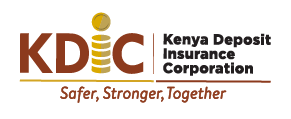
Crisis Preparedness and Bank Resolution: My take home.
By Nancy Ochego, Assistant Manager, Management Accounting
It was a sunny bright morning as we converged at the venue of our Crisis Management and Bank Resolution workshop The ambience here was simply breathtaking for most of us, having been wowed along the way by the scenic beauty of the majestic Mt. Longonot and other magical sites. My colleagues who have taken a similar training before, had briefed me on its intensity. And so though a bit anxious on the complexity of the training, I was well prepared and ready to gain knowledge.
Listening to our Team Leader deliver the opening remarks, one could sense the commitment by the leadership to empower the team on matters resolution, regardless of their area of specialty. Being the first of its kind in-house engagement, this training, was geared towards providing basics in contingency planning and crisis preparedness for an effective deposit insurance. For starters soon after the training was opened, the key message from our facilitators was “lower your voltage!”- breaking the content to its simplest form.
The first session on banking activities and life cycle of the bank brought to the fore how banks are incorporated and operated in Kenya. Commercial banks, Micro- finance banks and mortgage finance institutions being our key stakeholders, understanding their banking environment was an important tenet to contingency planning and crisis preparedness.
The contagion effect that arises from failure of member institutions as a result of its scale of interrelated activities or association with the bank cannot be ignored. On takeover the facilitators emphasized on priority documents that need to be safeguarded owing to their importance in the continuity of operations of the bank.
Suffice to say that this training’s content was quite rich. My take home however, was that focus should be on preservation of assets (in this case loan advances) of the bank and related supporting documents for loans advanced, both in soft and hard copy, contracts (staff & service providers), Board minutes and legal documents. Not forgetting ‘securing core banking system of the bank.’
Just like any machine or system, there are ‘danger signs’ for an impending disaster. It’s not any different for member Institutions- early warning signs are detected by our Risk and Examination Directorate through surveillance systems. Indeed, it mirrors surveillance cameras through a model called CAMEL rating. My only previous interaction with the word ‘CAMEL’ was in reference to a type of animal. But in this context, CAMEL is actually the process of assessing the banks’ performance on different parameters; Capital Adequacy, Asset Quality, Management, Earnings and Liquidity. The ratings range from (1) to (5).
The end of the first session indeed ‘lowered the voltage!’ It set the stage to a very exciting journey to the remaining activities, which were equally exciting.
From contingency planning and crisis preparedness to banking resolution framework, all but vital lessons for a great cause.
The highlight of the workshop was the much-anticipated simulation exercise, that saw the team put to test its contingency planning, real-time!
‘Time is of the essence,’ could not be overemphasized! Here, one has to make a decision real quick or worsen the situation for the bank that’s already in the red.
The exercise became more exciting with role plays, eventually the message was home! Whatever you do; communication is a very important aspect in the resolution process. It is important to have in place a crisis communication strategy that outlines roles and responsibilities of every member, thus ensuring that your public messaging is well structured.
Kudos to the team!







